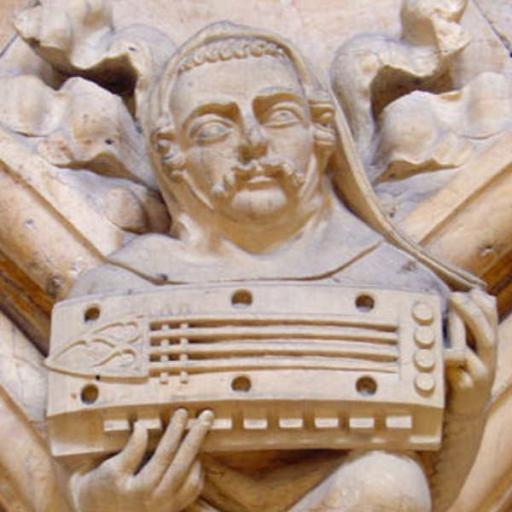Lochaber - Orpheus Caledonius (1733)

musician/member name: Music
Duration: 00:03:00
description:
Duration: 00:03:00
description:
Lochaber (Gael. Loch Abar) is one of the districts of the Scottish Highlands, whose main town, Fort William, is located about one hundred kilometers northwest of Glasgow. From Fort William, you can see the Grampian Mountains where Ben Nevis (Gael. Beinn Nibheis), the highest peak in Great Britain, rises to 1345m above sea level.
• The origin of this tune, the first known written version of which dates back to 1676, lost itself between Scotland and Ireland and I will not venture to take sides. In fact, a very similar tune was also known in Ireland as "King Jame's March to Ireland" (in reference to the expedition of James II from Kinsale to Dublin in 1689), which would link the melody to titles also known in Ireland as "Limerick's Lament" or Limerick's Lamentation". There is also a Welsh version...
• The words associated with the tune in William Thompson's Orpheus Caledonius (1733) are those published in Scottish poet Allan Ramsay's "Tea Table Miscellany" (1724). They recount the feelings of a soldier about to leave for abroad, uncertain of seeing his native country again: "We'll maybe return to Lochaber no more...". Indeed, "Lochaber no more" is perhaps today the best-known version of the tune, which fits better with a slow and rather melancholic rhythm. It is in this spirit that it is sometimes heard at funerals, played on the violin or bagpipes.
• Like many other traditional Scottish tunes, this one was the victim of an "Italian baroquization", notably by Francesco Barsanti (A Collection of Old Scots Tunes, 1742) and James Oswald (The Caledonian Pocket Companion, 1743-1759). To the score by William Thompson, here taken entirely from an archive of the National Library of Scotland : https://digital.nls.uk/special-collections-of-printed-music/archive/91480329
... I just added a synthesizer accompaniment line, played on iPad with the ThumJam application :
https://thumbjam.com
• For the illustration, I particularly thank Bernard Blanc, who gave me permission to share some of his very pretty photos of Lochaber on Flickr :
https://www.flickr.com/photos/50879678@N03/
• The dulcimer (Virginia dogwood/walnut) was built in 2018 by Jack Ferguson (Salem, VA, USA) :
https://jackferguson.myshopify.com/
... and was tuned 1-5-8 (D-A-d).
***
• The origin of this tune, the first known written version of which dates back to 1676, lost itself between Scotland and Ireland and I will not venture to take sides. In fact, a very similar tune was also known in Ireland as "King Jame's March to Ireland" (in reference to the expedition of James II from Kinsale to Dublin in 1689), which would link the melody to titles also known in Ireland as "Limerick's Lament" or Limerick's Lamentation". There is also a Welsh version...
• The words associated with the tune in William Thompson's Orpheus Caledonius (1733) are those published in Scottish poet Allan Ramsay's "Tea Table Miscellany" (1724). They recount the feelings of a soldier about to leave for abroad, uncertain of seeing his native country again: "We'll maybe return to Lochaber no more...". Indeed, "Lochaber no more" is perhaps today the best-known version of the tune, which fits better with a slow and rather melancholic rhythm. It is in this spirit that it is sometimes heard at funerals, played on the violin or bagpipes.
• Like many other traditional Scottish tunes, this one was the victim of an "Italian baroquization", notably by Francesco Barsanti (A Collection of Old Scots Tunes, 1742) and James Oswald (The Caledonian Pocket Companion, 1743-1759). To the score by William Thompson, here taken entirely from an archive of the National Library of Scotland : https://digital.nls.uk/special-collections-of-printed-music/archive/91480329
... I just added a synthesizer accompaniment line, played on iPad with the ThumJam application :
https://thumbjam.com
• For the illustration, I particularly thank Bernard Blanc, who gave me permission to share some of his very pretty photos of Lochaber on Flickr :
https://www.flickr.com/photos/50879678@N03/
• The dulcimer (Virginia dogwood/walnut) was built in 2018 by Jack Ferguson (Salem, VA, USA) :
https://jackferguson.myshopify.com/
... and was tuned 1-5-8 (D-A-d).
***



Beautiful melody, beautifully played. I'd be interested in knowing more about the Welsh version...
That's gorgeous!An interesting variation on the pipe tune.The "Scottish Renaissance" gave us some beautiful music,mixing European styles with Gaelic culture.It's a very deep well,the Gaelic,which you draw from so beautifully.
This is so very pretty... thank you for sharing it with us!
I love Scottish tunes... there is something so beautifully lonely about them.
Very creative talent, using your ipad app to add the other line!